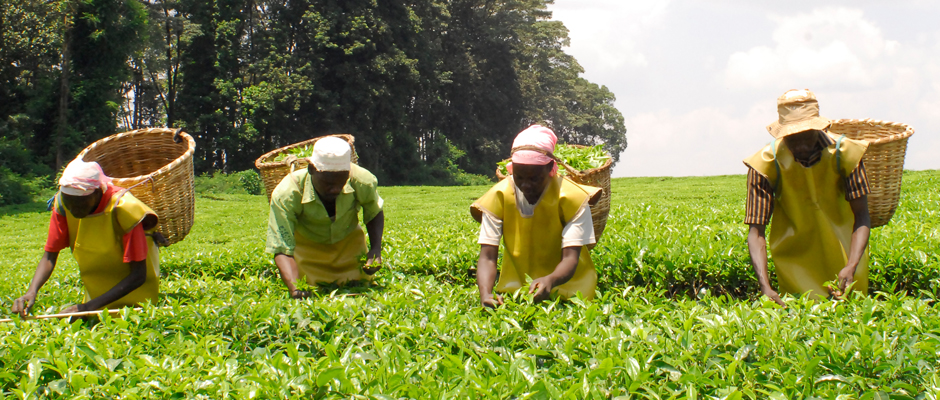Unlocking Value of Agriculture in Northeast

Bihar Deputy CM bats for mechanised farming
February 23, 2018
Agri Tech Park to be set up in Telangana
February 24, 2018Aarender Anugu
Northeast India is endowed with colossal natural resources. It has rich soils, abundant water resources and favourable climate. But, agriculture remains a subsistence activity and its potential for commercialization has remained unexploited. Although 70 per cent of population depends on agriculture, its share in region’s GDP was just 24 per cent. Only 22 per cent of the total land is used for agriculture, whereas national average is 54 per cent.
Average operational holdings in the northeast were just 0.93 ha compared to national average of 1.15 ha. Only 11 percent of cultivated land is irrigated compared to national average of 35 percent. Agricultural sector is growing at 4 percent, whereas growth in GDP at 6.83 percent per annum in last decade. Structural constraints like difficult terrains, inaccessible habitations, diverse socio-cultural and agricultural typologies, small, scattered and fragmented land holdings, lack of location-specific production technologies, poor infrastructure (transport, markets and processing), underdeveloped institutions (credit, extension, information, insurance) are hindering to use its immense natural resource base.
Low Public Investment
Within agricultural GDP, share of crop sector was high (58pc) followed by forestry (18 pc), livestock (15 pc) and fisheries (9pc). In total public expenditure in agriculture, crop sector share was 38 pc, followed by livestock (12 pc) and soil and water conservation (8 pc). There was little investment in forests, even though its contribution in production and nutrition was significant.
Public investment per hectare was quite low (Rs 200/ha) in NE compared to other hill-states like Himachal Pradesh (Rs 3000/ha) and Himachal Pradesh (Rs 5000). Investments in public infrastructure, network of roads, connectivity and development of institutions are prerequisites for using the potential and to employ educated youth of this region.
Misdirected Cropping Pattern
60 per cent of the cropped area was occupied by paddy followed by vegetables 14 percent, plantations 10 per cent, and spices 9 per cent. Average yield of paddy was lower than national average of 2461 kg/ha, except Manipur and Tripura. Although horticultural crops like pineapple area (72 pc of India’s area of pineapple is in the NE) was high, yields were less than one-fourth of all-India average. Comparatively paddy gives relatively low returns Rs 39, 000/ha than horticultural crops (about Rs 50,000/ha). Hence there is a need for crop diversification towards horticultural crops. Animal husbandry and fisheries sector also have high potential to increase farmers’ incomes in this region.
Less access to Infrastructure
National Sample Survey Office (NSSO) figures indicate that the average per capita income of households is Rs 17,680 and ranging between Rs 14,179 for marginal farmers and 62,720 for large farmers. Farmers get 57 pc of their income from crops, 27 pc from wages, 10 pc from livestock, and only 3 pc from off-farm income. Only 58 pc of household’s access to pucca roads, 28 pc had access to electricity, 10 pc access to post offices but more than 80% have mobile phones. This shows precarious position in infrastructures at the same time wider possession of mobile phones.
Boosting Investment
To increase farmers’ incomes, the price increase is not sustainable source of growth in the long run. Yield increase, diversification to high-value crops, animal husbandry, market development, contract-farming, rural industries; roads/electricity should be given focus. Increasing yield of paddy crop will not only increase incomes, but also foodself sufficiency. Huge investment in agricultural R&D, physical infrastructure is essential to reduce logistic costs in transportation and increasing connectivity with SEA countries and Bangladesh.
The region having some unique strength such as hot spot for bio-diversity, plenty of water availability, natural organic farming and well organised collectives, which needs to be harnessed for increasing farmers’ incomes.
Productivity and Value Creation
Given its potential and opportunities, government should focus on productivity enhancement and cost reduction technologies like zero tillage methods in various crops, expansion of irrigation through water harvesting, integrated farming systems. In the region, there are large tracts of waste lands available, which can be used for agro-forestry and agro-tourism development. Development of post-harvest structure (like cold-storages)in public-private partnership mode to build value chain to connect NE region with mainland and also potential international markets like Bangladesh, China in line with look east policy.
Employment Creation
NE region is endowed with educated youth, but mostly underemployed. There was a need to enhance off-farm income and off-season employment opportunities for rural educated youth through market driven diversification by innovative agri-business models, encouraging handicraft, eco-tourism and agri-tourism.
Organic agriculture
Given that farmers in this region practice organic agriculture by default, identification of markets, potential crops and efficient mode of organic certification and branding in both domestic and international markets to be focused to increase farmers’ incomes
Quality Seeds
Quality seed in agriculture, piglets and breeds for animal husbandry sector and fingerlings for fisheries are important inputs, which have the potential to increase yields by 50 pc. There is a need for development of institutional innovations like seed banks in public-private partnership mode to cater to the needs of farmers.
Mobile Advisory Services and Community Organisations
The region is mostly hilly and undulating territory and transport is difficult, but most of the farmers do have mobile phones which can be used for effective dissemination of agricultural knowledge, delivering credit, payment of bills etc. As the region also have good community organisations developed over several generations, these organisations may be strengthened to establish community resource centres, custom hiring centres to impart training and to provide farm services.
Last Words
Overall, to fully utilise the potential of agricultural sector in the northeast, a paradigm shift in approach is required and huge investments in public-private community participation.
(The author is the Director, National Institute of Agricultural Extension Management, Hyderabad and he can be reached at amarender.anugu@manage.gov.in)
—————————————————————————————————————————————


